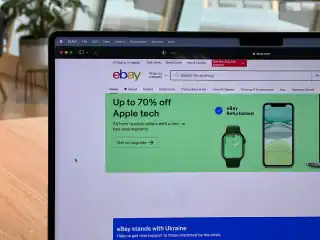Did you know that the market size of affiliate marketing is expected to be around $27.78 billion by 2027? This stat means we can earn money in this side hustle. And if you want to know how to start affiliate marketing, you’re in the right place.
Starting in affiliate marketing requires more than enthusiasm; it demands careful planning and smart tactics. Otherwise, you’ll end up like many others—throwing ideas at the wall and hoping something sticks.
The good news is that there’s a method for obtaining high-quality links from your content. In this guide on how to start affiliate marketing, you’ll discover what this industry is all about and how you can succeed in this.
1. Choose Your Niche
Choosing the right niche is one of the most important decisions you’ll make as an affiliate marketer. It can mean the difference between struggling to make a few bucks and earning a full-time income.
But here’s the thing: picking a niche is more complex than going with your gut or choosing something that sounds cool. If you’re aiming for success, doing detailed homework and thoughtful analysis is crucial.
Starting in affiliate marketing, most made mistakes of choosing a niche based solely on their interests. For instance, if you love hiking and outdoor gear, you may think, “Hey, why not promote camping equipment?”
Breaking into the camping market isn’t easy. It’s full of seasoned affiliate marketers and top-tier brands that have been around forever, so newcomers really need something special to stand out.
The result? You may feel overwhelmed in such a vast environment. Some will drop and change niches, which could be a waste of time and resources.
That’s why the value of thorough niche investigation became clear to me. Sure, it’s essential to choose a topic you love, but don’t forget—it’s equally crucial to pinpoint an expanding and lucrative market niche.
2. Research Your Target Audience
Let’s start with understanding your target audience. What are their pain points, desires, and buying behaviors?
One way to do this is through market research. Watching how specific phrases trend gives you real-time feedback on public interest, showing precisely what users are curious about as they browse online.
For example, let’s say you’re considering the fitness niche. A quick search on Google Trends shows that terms like “home workout” and “online fitness classes” have seen a huge spike in recent years, especially during the pandemic.
As the trend of exercising from home grows, this market seems like a golden chance for someone looking to succeed as an affiliate marketer. When you get a handle on current trends and shape your content around the interests of your target market, attracting and converting readers becomes much easier.
3. Analyze Your Competition
Once you’ve identified a potential niche, it’s time to scope out the competition. Many affiliate marketers get intimidated by this phase but trust me; competition analysis is your friend.
The goal isn’t to find a niche with zero competition. Spoiler alert: that rarely exists.
Spotting market gaps and filling them with your own style and know-how can really set you apart. One way to do this is to spend a moment exploring the types of posts and articles your competition is creating so that you can stay ahead with fresh concepts.
The topics can range widely—expect discussions about new technology, recent news highlights, wellness advice, and fashion updates. What formats are they using? Is it blog posts, videos, or podcasts? But really, what essential piece are we overlooking?
Going back to our example, while there were plenty of affiliates promoting camping gear, very few were creating in-depth, step-by-step guides for beginners. This opportunity can become the top resource for newbies in camping who need help picking the right equipment.
Analyzing competitor moves reveals overlooked prospects so that even dense markets become places where you can shine.
4. Select Products To Promote
Now comes the fun part: choosing the products you’ll promote as an affiliate. This is another phase where affiliates make the mistake of prioritizing commissions over relevance.
Sure, that high-ticket item with a 50% commission rate might seem tempting, but if you need a better fit for your audience, you’ll have a tough time making sales. Aim for products that really fix the issues your readers face while matching up with what they enjoy or need.
Offering meaningful solutions will resonate far better than random recommendations.
I find it really effective to talk about and recommend products that I’ve actually used and genuinely enjoyed. Since I’ve tried them all myself, I can tell you the real story behind every product. That way, I can honestly discuss their strengths and weaknesses with you.
For example, since I have an active lifestyle, I know a specific brand of hiking boots to promote. That’s because I had worn multiple brands on various trips. The detailed feedback I can give can feature images and firsthand accounts highlighting how these held up in multiple conditions.
If that’s the case, my readers can appreciate the honesty and personal recommendation. And based on experts, these can boost sales.
Of course, you won’t have personal experience with every product you promote, and that’s okay. In those cases, be sure to do your research, read reviews from other users, and only recommend items you genuinely believe in.
Think of it as a Venn diagram—at the center are your passion points meeting audience needs while aligning with current trends. It might take some trial and error, but I believe it’s worth it when you finally hit that affiliate marketing jackpot.
5. Set Up Your Site
If you want to crush it with affiliate marketing, you need to build a solid online presence. And that all starts with your website.
Your site is your home base on the web. It’s where you’ll drive traffic, build your audience, and ultimately earn those sweet affiliate commissions.
Let’s start with choosing a domain name and choosing your web host. Your domain name is your website’s address on the Internet. It’s what people will type into their browsers to find your site.
And in affiliate marketing, selecting a killer domain name is a must. Go for a title that’s hard to forget but simple enough that anyone can spell it. Make sure it’s relevant, too!
Struggling with your domain choice? Follow these suggestions for a great one.
- Keep it short and sweet. Aim for 15 characters or less.
- Make it easy to spell and pronounce. Avoid using numbers, hyphens, or weird spellings.
- Target your content with keywords that resonate with your audience and niche. Enhancing SEO not only improves visibility but also clearly communicates your webpage’s main focus to users.
- Be unique and brandable. You want a name that stands out and is easy to remember.
- Check for availability across platforms. Ensure the domain name you choose is not only available as a web address but also as usernames on social media platforms. Consistency helps build a cohesive online presence.
Once you’ve chosen your perfect domain name, it’s time to choose a web hosting provider. This company will keep your website’s files safe and ensure they’re available for everyone to see.
Choosing the right web hosting service can be overwhelming, but here’s what to look for.
- Uptime: You want a host with good uptime, so your site is always accessible.
- Speed: Choose a host with fast servers to ensure quick loading times for your visitors.
- Customer support: Look for a host with 24/7 support in case you run into any issues.
- Scalability: Growing websites require hosts that can smoothly support higher traffic levels and additional resource needs.
- Security features: Look for hosts that offer SSL certificates, firewalls, malware protection, and regular backups to keep your site and data safe.
I recommend using Bluehost for web hosting. Not only is it budget-friendly, but it also offers outstanding reliability and fantastic customer assistance whenever needed. Plus, it’s super easy to set up your website with its one-click WordPress installation.
6. Design Your Website
Now that you’ve got your domain name and web hosting sorted, it’s time to design your website.
When it comes to affiliate marketing, your website design should be clean, professional, and easy to navigate. Focus on building a smooth experience where visitors find it effortless and enjoyable to browse through all your great content.
Here are a few key elements to include in your website design:
- Clear navigation: Make it easy for visitors to find what they’re looking for with a straightforward menu and logical site structure.
- Engaging visuals: Incorporate vivid photos or well-designed illustrations throughout your pages. These visuals can make them look better and help manage lengthy passages of content effectively.
- Mobile responsiveness: As more people browse on their phones, it’s crucial that your site looks great on mobile devices.
- Strong branding: Consistently incorporate your logo, colors, and fonts throughout your site to create a cohesive brand identity.
- Call-to-action (CTA) buttons: Include clear and compelling CTAs that guide users toward desired actions, such as signing up, purchasing, or contacting you.
If you’re not a designer, don’t worry. Plenty of website builders and templates make it easy to create a professional-looking site without any coding knowledge.
I’m a big fan of WordPress. It’s a free, open-source platform that powers over 40% of the web. With thousands of themes and plugins at your fingertips, shaping your site to match exactly what you want has never been easier.
7. Create Valuable Content
Your affiliate marketing site’s winning edge relies on what you put out there: Outstanding content.
You could have the most beautifully designed site in the world, but if your content isn’t valuable and engaging, you won’t get very far.
Crafting excellent material means zeroing in on what adds real value for the people who engage with it. So, what kinds of issues are on their agenda for resolution? Which questions are on their minds? In what ways can we help them hit their targets?
Here are a few types of content that tend to perform well for affiliate marketers:
- Product reviews. To keep it real, open up about how these products have worked for you personally, sharing both pros and cons from firsthand experience.
- How-to guides. Walk your readers through a specific process or task step-by-step.
- Comparison posts, which showcase how different products compare against each other, can help people make well-informed choices that best suit their needs.
Always picture your audience and create something they’ll love and relate to. Write in a conversational, relatable tone, and break up your text with subheadings, bullet points, and images to make it easy to read.
Optimizing your writing helps improve its chances of being found by people using Google or other search tools. Keywords should be included in titles and section headings and scattered throughout your writing for better visibility.
But don’t overdo it – focus on creating content that’s valuable and engaging first and foremost.
One tool I love for keyword research is Ahrefs. You can see the keywords that give your rivals an edge and spot new chances to improve what you write about.
Moreover, one of the best tips on how to start affiliate marketing is to attend webinars; they’re packed with actionable advice from industry pros. You’ll find loads of step-by-step guides and real-life examples showing you the ropes of creating top-notch content for successful affiliate marketing.
Crafting a solid online presence takes time, patience, and consistent effort. But by focusing on creating a user-friendly website with valuable, engaging content, you’ll be well on your way to affiliate marketing success.
8. Find Relevant Affiliate Programs
You’ve picked your niche, set up your site, and created some killer content. The time has come for you to really rake in the dollars.
That means finding the right affiliate programs and networks to join. Get ready—excitement is going to ramp up right now.
There are two main ways to find affiliate programs that fit your niche like a glove: going directly to the brands you love or browsing affiliate networks. I’ve done both, and they each have their perks.
If you already know some brands that would be a perfect match for your audience, head straight to their website and look for an “Affiliates” or “Partners” page. Most of the time, signing up is totally free and takes just a few minutes.
But if you want to cast a wider net, affiliate networks are the way to go. Using these systems allows interaction with massive groups—hundreds or possibly over a thousand folks at your fingertips.
Some of my favorite networks include:
- ShareASale
- CJ Affiliate
- Rakuten Marketing
- ClickBank
- Amazon Associates
The key is to focus on programs that offer products your audience will love and that have a solid reputation for paying their affiliates on time. Don’t just chase the highest commissions – look for brands you can genuinely recommend.
Once you’ve found some programs like ones who advertise platforms for online courses that look promising, it’s time to apply. And here’s where a lot of newbies get nervous.
But honestly, most applications are a breeze. They usually just want to know a bit about your website, your traffic, and how you plan to promote their products.
My top tips? Be honest and professional and show that you really understand their target audience. If you have a strong niche site with quality content, you’ll get approved 99% of the time.
Don’t hesitate to take those first small actions; they often lead to significant breakthroughs later. Even if a program only pays 5% commissions, those sales add up fast if it’s a product your audience loves. Plus, proving yourself with the little guys can help you land the big fish later on.
9. Manage Your Affiliate Links
Okay, you’re in. Now, you need actually to use those affiliate links they gave you.
I like to use a simple spreadsheet to track my links, the commission rates, and any special terms for each program. That way, I always know exactly what I’m earning and can spot any issues fast.
There are also some nifty affiliate marketing tools out there, like ThirstyAffiliates or Pretty Links, that can help you manage your links right from your WordPress dashboard. They make it super easy to pop your links into posts and keep everything neat and tidy.
One more pro tip: always, always, always disclose your affiliate relationships. Legal compliance isn’t optional, but beyond that, it fosters genuine trust from those who engage with you. Just a simple line like “Hey, heads up that some of the links below are affiliate links, and I may earn a small commission if you buy through them” does the trick.
So there you have it—the inside scoop on finding, joining, and managing affiliate programs like a pro. It takes a bit of legwork upfront, but once those commissions start rolling in, it’s all worth it.
Coming right up, we’ll examine a few awesome techniques for boosting your affiliate product promotions and increasing sales. Watch as your website becomes a top-notch income generator in no time!
10. Promote Your Affiliate Products
You’ve found the perfect affiliate products to promote and signed up for the programs. Now comes the exciting part: driving serious traffic and generating those sweet, sweet commissions. But where do you start?
First things first: focus on creating high-quality content that showcases your affiliate products in the best possible light. Your goal is to craft detailed reviews, comparisons, and guides that highlight the unique benefits of each product and help your audience make informed decisions. When your content is authentic, valuable, and well-researched, it builds trust with your readers—encouraging them to click on your affiliate links.
To reach an even wider audience, don’t stop at just your website or blog. Utilize multiple platforms like social media, email, and video hosting sites to amplify your efforts.
11. Create Product Reviews
Don’t commit the mistakes of others: Just slapping up a bunch of links and hoping for the best. If you want people actually to click on your affiliate links, you need to give them a reason to trust your recommendations.
At this point, reviewing some product reviews and comparisons becomes super useful. Sharing in-depth and sincere evaluations of items lets your followers know they can rely on you, making it easier for them to decide to click on those affiliate links you’ve shared.
But here’s the key: your reviews need to be genuinely helpful and informative. Don’t just regurgitate the product description from the merchant’s website. Test out the product personally, then provide candid thoughts on how well (or not) it worked for you.
Don’t be afraid to point out both the pros and cons. Being truthful boosts the credibility of your recommendations significantly because folks appreciate honesty and will trust you.
When you’re writing a product comparison, try to cover all the key features and benefits of each product and explain why someone might choose one over the other. Make it easy for your readers to see the differences at a glance, maybe with a handy comparison table.
The more helpful and in-depth your reviews and comparisons are, the more likely people will be to click on your affiliate links and make a purchase. Believe me, putting in a bit more effort really pays off.
12. Leverage Social Media Marketing
Once you’ve created some killer product reviews and comparisons, it’s time to get them in front of as many eyeballs as possible. And one of the best ways to do that is through social media marketing.
Now, I know what you’re thinking: “But isn’t social media just a bunch of cat videos and selfies?” Well, yes. More than that, you can easily attract an audience and boost sales of your chosen affiliate products.
Find the right channels where your specific crowd hangs out for better engagement and results. If you’re promoting B2B software, LinkedIn might be your best bet. Selling workout equipment? Tap into Instagram’s massive user base—it’s where your customers might be hanging out.
After finding suitable channels, shift gears toward generating appealing content designed to attract viewers’ curiosity—and their clicks! Of course, share your product reviews and comparisons.
But mix it up with other types of content, too, like helpful tips, behind-the-scenes glimpses, and even the occasional funny meme (as long as it’s relevant to your niche).
You want folks glued to your posts, trusting the tips you give while eagerly waiting for more updates in their daily social media scrolls. So, feel free to use your resources to back up projects you believe in. Make sure your messages pop so they engage and pull in as many new viewers as possible.
13. Utilize Email Marketing
Email marketing is another incredibly effective way to promote your affiliate products and drive traffic to your reviews and comparisons. Imagine the impact of popping up directly in someone’s inbox with a personalized note and an irresistible call to action.
But before you start blasting out emails left and right, you need to build up your email list. Offer a valuable lead magnet, like a free ebook or course, in exchange for people’s email addresses. Create opt-in forms on your website and social media profiles. Run a contest or giveaway.
Now that you’ve gathered a good number of subscribers get into creating those email campaigns.
But send more than just the same generic email to everyone on your list. Segment your subscribers based on their interests, behaviors, and past purchases, and tailor your messages accordingly. Making things personal can really boost trust and turn visitors into customers.
Of course, always include a clear call to action in every email, whether it’s to click through to your latest review, take advantage of a limited-time offer, or simply hit reply and start a conversation.
14. Implement SEO Strategies
Last but certainly not least, let’s talk about SEO. If you want your affiliate product reviews and comparisons to get found by potential customers, you need to optimize them for search engines.
Jumpstart the process with some solid keyword research right from the beginning. Use tools like Google Keyword Planner and Moz Keyword Explorer to find the phrases and terms people are actually searching for in your niche. Then, incorporate those keywords naturally into your content, meta tags, and headers.
But don’t just stuff your content full of keywords and call it a day. Concentrate on generating meaningful, excellent material that effectively responds to users’ concerns and offers practical fixes for their dilemmas.
That’s what Google wants to see, and that’s what will help you rank higher in the search results.
In addition to on-page optimization, don’t neglect your off-page SEO efforts:
- Build high-quality backlinks from reputable websites in your niche.
- Engage in online communities and forums where your target audience hangs out.
- Get noticed in the right circles by submitting well-crafted blog posts to industry-specific websites.
The more high-quality, relevant backlinks you can build to your affiliate product reviews and comparisons, the higher they’ll rank in the search results and the more organic traffic you’ll drive.
Getting good SEO results is like running a marathon; it takes patience and effort over time to see the benefits. It might seem tough now, but you’ll find it’s well worth every bit of affiliate marketing effort.
Just remember: always put your audience first. Create genuinely helpful and valuable content, and build trust and relationships. With the right strategies and a little bit of hustle, you can turn your affiliate marketing side hustle into a full-time income stream.
FAQs
Before we end this guide, let’s address some frequently asked questions.
How can I start affiliate marketing as a beginner?
Begin by picking a niche, setting up a website, and joining affiliate programs. Promote products with content.
Can you make $100 a day with affiliate marketing?
Picking the best items for your audience and boosting website visitors will help you reach your goals faster than you’d think.
Does it cost money to start affiliate marketing?
There are basic upfront costs, like some cash for a domain, hosting, and maybe some tools, but it’s usually affordable.
How to start affiliate marketing with no audience?
Create quality content first. Use SEO strategies and social media to build an audience before blog monetization through affiliates.
Conclusion
You’ve now got the lowdown on how to start affiliate marketing effectively. Success comes from more than frequent updates – you need strategic thinking and organized efforts behind your content creation.
This journey isn’t only possible but incredibly rewarding if done right! To successfully embark on this venture, understanding the basics and laying down a solid foundation is crucial. From finding your niche to selecting the right affiliate programs, it’s essential to conduct in-depth research.
And, of course, your success in affiliate marketing significantly depends on the quality of content you produce—be it blog posts, reviews, tutorials, or videos. Engaging content not only attracts but retains audience attention while subtly integrating product recommendations without coming off as overly promotional—an essential aspect of converting readers into buyers.
Lastly, promotion strategies vary widely across different channels. However, focusing on SEO tactics can drive organic traffic efficiently without additional costs involved in paid advertising campaigns (though these can amplify reach).
All you need to do now is apply this guide. You will never know whether you can succeed in this if you don’t start now.






